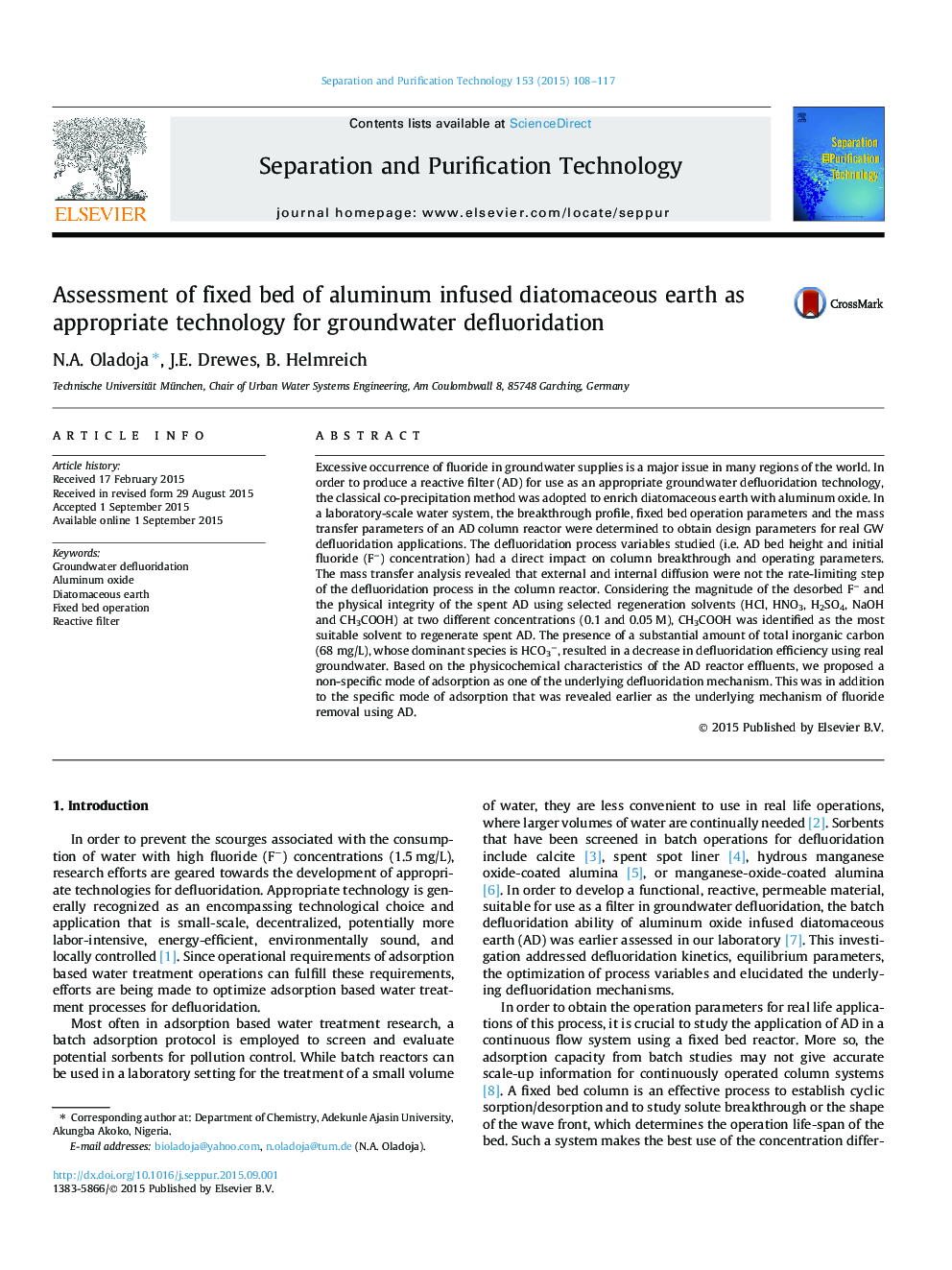| کد مقاله | کد نشریه | سال انتشار | مقاله انگلیسی | نسخه تمام متن |
|---|---|---|---|---|
| 640361 | 1456966 | 2015 | 10 صفحه PDF | دانلود رایگان |
• Design parameters for GW defluoridation were obtained from laboratory-scale system.
• External and internal diffusion were not the rate-limiting step of defluoridation.
• CH3COOH, the best regenerating solvent for spent AD protects the sorbent integrity.
• Higher TIC value caused reduction in defluoridation efficiency in groundwater system.
• Specific and non-specific mode of adsorption were the mechanisms of defluoridation.
Excessive occurrence of fluoride in groundwater supplies is a major issue in many regions of the world. In order to produce a reactive filter (AD) for use as an appropriate groundwater defluoridation technology, the classical co-precipitation method was adopted to enrich diatomaceous earth with aluminum oxide. In a laboratory-scale water system, the breakthrough profile, fixed bed operation parameters and the mass transfer parameters of an AD column reactor were determined to obtain design parameters for real GW defluoridation applications. The defluoridation process variables studied (i.e. AD bed height and initial fluoride (F−) concentration) had a direct impact on column breakthrough and operating parameters. The mass transfer analysis revealed that external and internal diffusion were not the rate-limiting step of the defluoridation process in the column reactor. Considering the magnitude of the desorbed F− and the physical integrity of the spent AD using selected regeneration solvents (HCl, HNO3, H2SO4, NaOH and CH3COOH) at two different concentrations (0.1 and 0.05 M), CH3COOH was identified as the most suitable solvent to regenerate spent AD. The presence of a substantial amount of total inorganic carbon (68 mg/L), whose dominant species is HCO3−, resulted in a decrease in defluoridation efficiency using real groundwater. Based on the physicochemical characteristics of the AD reactor effluents, we proposed a non-specific mode of adsorption as one of the underlying defluoridation mechanism. This was in addition to the specific mode of adsorption that was revealed earlier as the underlying mechanism of fluoride removal using AD.
Journal: Separation and Purification Technology - Volume 153, 16 October 2015, Pages 108–117
